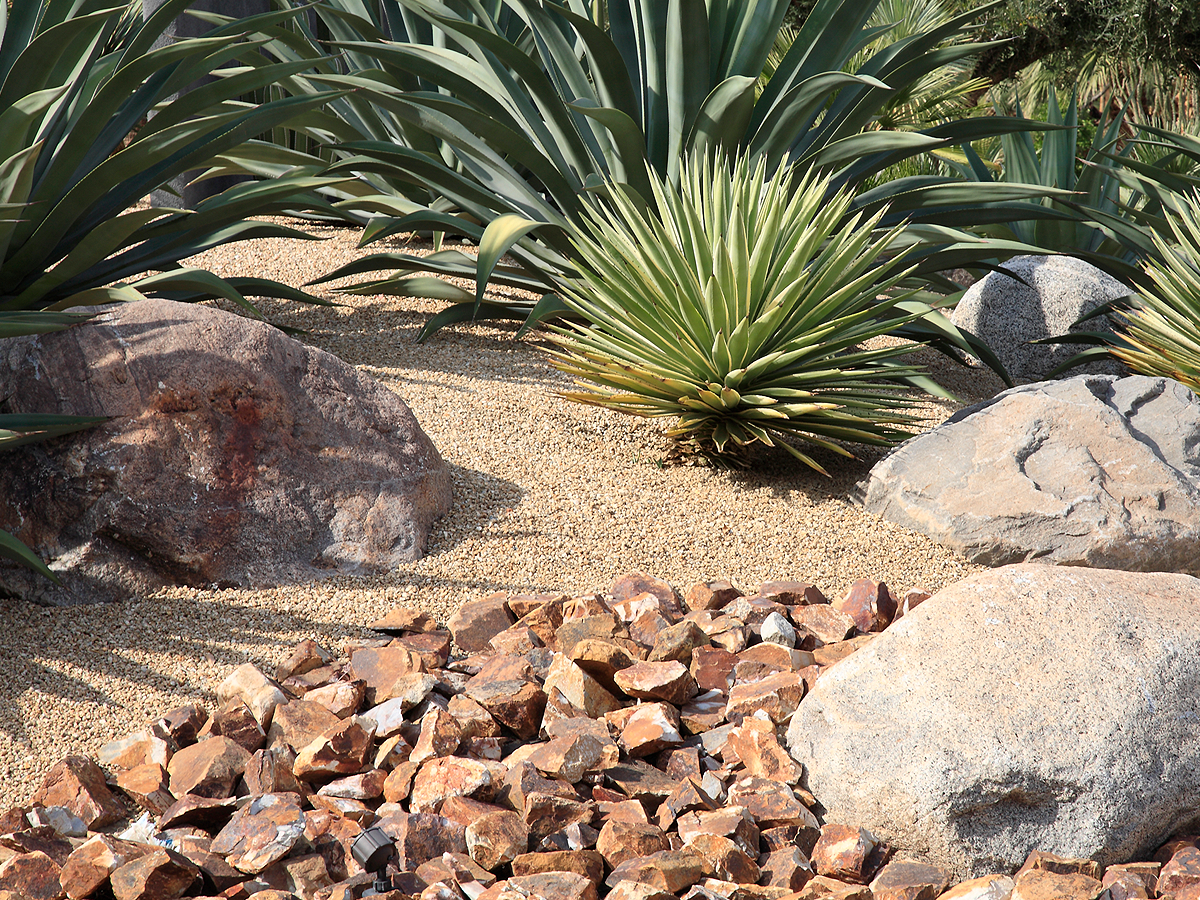Xeriscaping - A Water Wise Alternative
July 12, 2020
Save Time, Water, and Money
Water conservation throughout the west continues to be a hot topic. With ever-increasing water rates and dwindling supply, homeowners are looking for ways to reduce their water usage. They’re also looking for ways to cut the amount of time they spend working on their yard.
A combination of lawn sculpting and Xeriscaping is a great option to do both, helping the average homeowner save time and reduce water usage by 50 percent.
Xeriscaping does not necessarily mean the wholesale eradication of your lawn or replacing every bit of green with rocks and desert shrubs. Xeriscaping, pronounced zeri-scape-ing, balances a right-size lawn with native or minimal-maintenance plants and shrubs – including a wildflower meadow, sunflower patch, or just a line of tall grasses.
The ideal minimized yard will save money by using far less water, limit your time maintaining the yard, and deliver interesting colors all year long. If that sounds ideal to you, give these xeriscaping tips a try.
Planning
Start by deciding how much of your lawn you want to keep. Lawns play an important role in cleaning the air we breathe and improving the health of our communities. However, the bigger the lawn, the more expensive it is to maintain.
Trimming your lawn down to a manageable, yet enjoyable size is key. If you have hills in your yard, you might consider taking turf out of those areas first. Once you have that planned out, you’ll want to start pulling out the rest of your lawn to make way for your new shrubs, plants, and flowers.
Use a rototiller to make the job easier. If you have a smaller lawn, you may be able to use a shovel to cut the lawn away. As you pull away the turf, you’ll notice the soil underneath needs some help.
Soil Enrichment
We all know that healthy soil equals healthy plants. Start by removing anything that could compete for water and sunlight. Now, work bags of nutrient-rich soil or other organic soil additives into your xeriscaping areas and rake the area flat.
Plant Selection
This is the most important part of the process. You want to choose flowers, shrubs, and other plants that easily grow in your part of the Northwest. Your new xeriscaping yard doesn’t need to be filled with native plants, but it doesn’t hurt. The vegetation you choose should be able to survive on rainfall alone – or just a little added water from you.
Coastal tip: If choosing to add a wildflower patch to your yard, always plant in sunny areas. Look for wildflower mixes that will grow well in your climate and plant according to the manufacturer’s recommendations, including the use of a seed spreader. Use a walk-behind roller to help with germination.
Think Efficiency
Group plants according to their watering needs. Put plants that require more water closer to your lawn. Outside of your lawn area, use drip irrigation or soaker hoses wherever possible to minimize water use and evaporation.
Coastal tip: Keep your garden or raised beds. Bees love xeriscaping and will start to visit your yard even more, helping your garden grow.
Cover with Mulch or Rock
Turf keeps your soil in place, but xeriscaping can leave soil exposed, allowing it to wash or blow away over time. Slow the process by adding bark chips to your xeriscaping areas. Placing rocks around the edges and against your home both looks nice and helps eliminate erosion.
Maintain
As with any new landscaping, you’ll spend the first year watering, pruning, and rearranging a bit more than you plan. But maintenance drops dramatically over the years. Yes, you will need to trim bushes, cut back shrubs, and mow your smaller lawn, but overall you’ll spend less time working on your yard and more time enjoying it.
Get Started Xeriscaping at Coastal!
Coastal has what you need to xeriscape your property. Your store carries the plants, shrubs, and seeds that grow in your area. Plus, you’ll find rollers, seed spreaders, bags of organic soil, soaker hoses, and even drip irrigation systems. Swing by your local store and let us show you how this new idea in landscaping can work for you.
Fun Facts
- The average homeowner will spend well over one month of his or her life mowing the lawn.
- Xeriscaping combines the Greek word xeri (meaning dry) with landscaping.
- Nationwide, landscape watering totals 9 billion gallons of water per day.
- A combination of lawn and xeriscaping can reduce water use by 50 percent for the typical American household.
